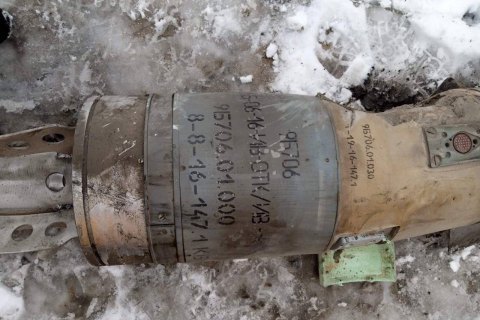Russian troops shelled the city of Pokrovsk, Donetsk region, with the latest cluster munitions from MLRS
"Tornado-S".Yesterday, March 3, local media outlets of Ukraine-controlled Pokrovsk
reported that a residential building was damaged during the night shelling of the city.

Photo: 06239.com.ua

Photo: 06239.com.ua

Photo: 06239.com.ua

Photo: 06239.com.ua

Photo: 06239.com.ua

Photo: 06239.com.ua
According to the
investigative journalists of the Conflict
Intelligence Team (CIT), the photos of the aftermath of the shelling show typical remnants of a cluster shell warhead. They can be seen in more detail in the photos published by the head of the
Donetsk regional state administration Pavlo Kyrylenko.
"One
of the photos shows the 9B706 marking. It’s the control unit of the latest rockets of the Russian MLRS “Tornado-S”. The configuration of the rudders in the bow of the missile also coincides with the
remains of the rudders on the wreckage of the missile that hit Pokrovsk," the investigators said.Shortly before the invasion of Ukraine a convoy of heavy MLRS had been noticed in the Rostov region,
added the CIT.According to them, it is difficult to distinguish "Tornado-S" from the unmodernized "Tornado" visually, but the vehicles in the video have the numbers of the RF Southern Military
District. Large-caliber MLRS in the Russian army are concentrated in brigades of district subordination. In the air defense, this is the 439th Guards Jet Artillery Brigade, which is armed with the
Tornado-S and, apparently, now involved in the offensive in the Donbass.These shells were positioned as a response to the
Ukrainian MLRS "Vilkha-M" (also a modification of the MLRS "Smerch"). We don’t know what their
(enemy) purpose was, but we remind that the strikes with cluster munitions that hit a large area are by definition indiscriminate. Therefore, their use in settlements is a potential war crime," the
journalists emphasized.














